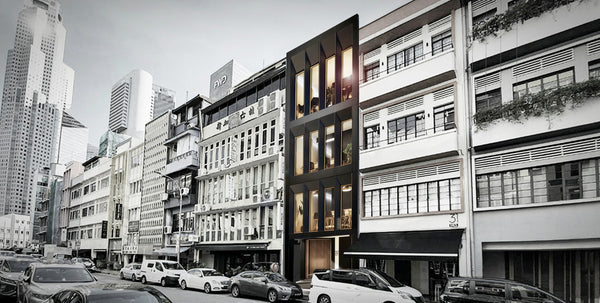Buying your first Wine Fridge
What qualifies a wine refrigerator?
It is an appliance that cools at warmer temperatures than a beverage or food refrigerator. It also has shelving(wooden) allowing storage of wine bottles horizontally. This allows the wine to keep the cork moist and prevent it from drying out.
Freestanding vs. Built-In wine fridges
A freestanding wine cooler is designed to stand alone while a built-in wine cooler (under-counter wine cooler) is designed to be built into existing counters and cabinetry as they include a front vent located under the door that channels heat forward away from the unit.
A freestanding wine cooler is designed to dissipate heat from the back, so this heat cannot escape from an enclosure and eventually will overheat the unit. This overheating will in turn noticeably decrease the cooler’s ability to maintain its internal temperature and cool your wine. The unit’s compressor will attempt to overcompensate for the overheating unit and may eventually burn itself out. At the very least you run the risk of shortening the cooler’s overall lifespan as the compressor is continually overworked. You run the risk of invalidating the manufacturer’s warranty by operating a freestanding unit in a built-in space.
What exactly is thermoelectric cooling?
Many smaller wine coolers employ thermoelectric cooling instead of using a traditional compressor and refrigerant. A thermoelectric wine cooler contains a cooling node consisting of a ceramic tile that has electrical current passed through it. As the electrical current is passed through the cooling node the outside of the tile will heat up and the other side (the side facing into the cooler) will cool down. Typically, a thermoelectric wine cooler will contain small fans inside the unit which help to evenly distribute the cool temperatures being created by the node throughout the interior of the unit.
What are the advantages of thermoelectric wine coolers vs. compressor-based coolers?
Due to the lack of a compressor, thermoelectric coolers will produce fewer vibrations which in turn will equal fewer disturbances of the sediments within the wine bottles. Please keep in mind that thermoelectric wine coolers are not completely silent as the internal fans needed to distribute the cold air within the cooler do produce some noise. However, they are usually quieter than compressor driven models. Thermoelectric coolers also consume less energy than compressor units, so they cost less to operate.
On the other hand, thermoelectric coolers are limited in that they can generally only produce temperatures about 12-16C.
Single Zone vs. Dual Zone Wine Fridges
Single zone wine coolers have one temperature control and the storage space is undivided, so the whole cooler is set to the same temperature. This style is best if you tend to keep only white or only red wines, since they don’t have the same optimal temperatures. Dual zone wine coolers (Triple Zone) have two temperature controls and the storage space is divided into sections which may be set to their own temperatures. This style is ideal for keeping both reds and whites.
Cleaning Your Wine Cooler
- Unplug your cooler. Remove all items from it (wine bottles, shelves, etc.)
- Clean the inside surfaces with a mild cleaner. We suggest you use either warm water alone, or a baking soda solution (try mixing 2 tablespoons of baking soda into a quart of water.)
- Clean the wire shelves/trays (if you have them) with a mild detergent solution.
- Clean the wooden shelves/trays (if you have them) with a soft cloth and wood cleaner.
- Wash the outside of the cooler with a mild detergent solution.
- Dry any wet parts with a soft cloth.
Caution: Make sure to minimize the exposure of water to any electronic or control parts.

